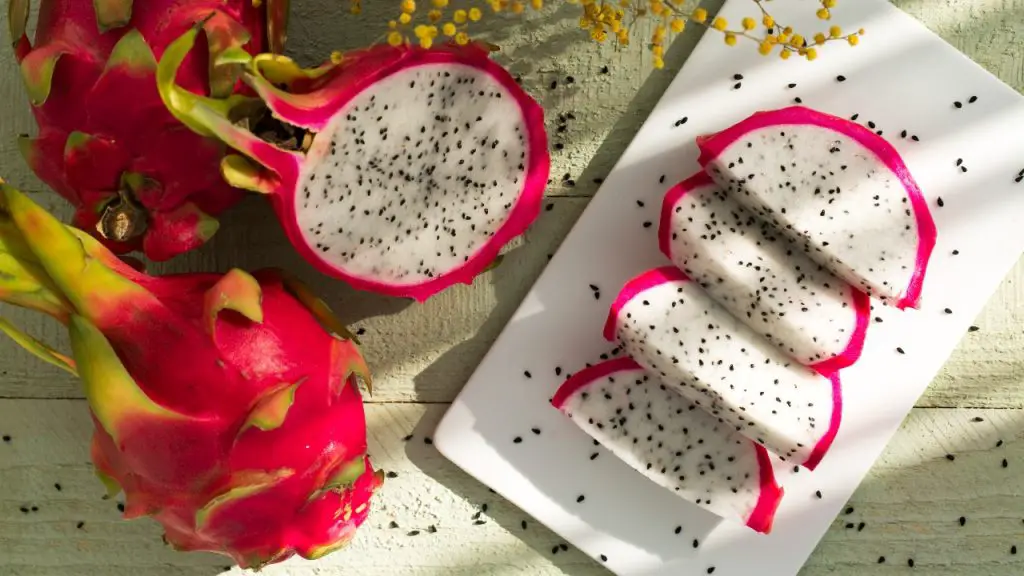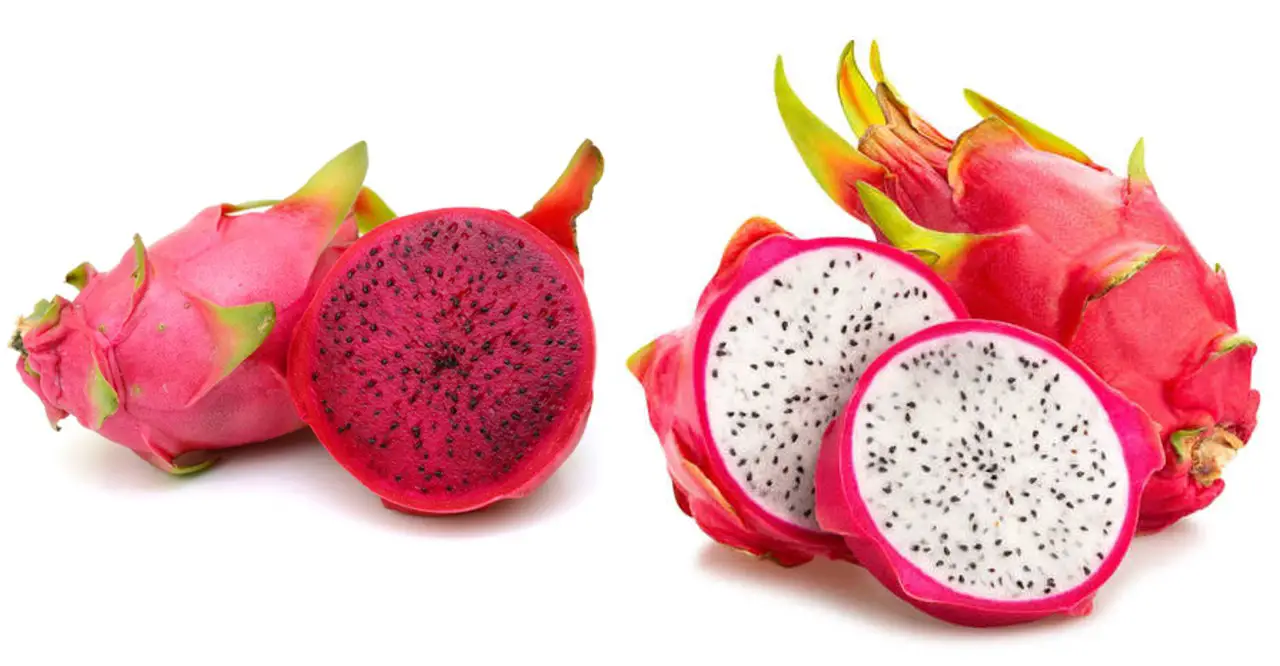How to grow a Dragon fruit plant inside is one of the common questions if you love planting and live in South America. The red spiky fruit is a sweet crop people love for its taste and several health benefits. Its golden or bright red skin has unique pointy green leaves that make this South American fruit stand out.
But it is not only the appearance, color, or shape of the leaves that make dragon fruit distinguishing. Its growth on the “Pitaya Cactus” is another defining attribute of this delicious fruit. Unlike other fruits that grow on vines or trees, you can grow dragon fruit indoors whether you have a 3-bedroom tiny house or a 400 yards villa.
That is to say; you only need a 10 to 12 inches deep pot and good quality soil to grow Dragon fruit inside your home. Place it on the area that receives at least 6 to 8 hours of sunlight such as a south-facing window. Water it thrice a week to help it flourish and enjoy watching the gorgeous plant grow.
Don’t fret if you’re the first-time grower of Pitaya Cactus. Here we have included a detailed guide on how Dragon fruit does grow to help you learn about the fruit and its complete growth process.
What is Dragon Fruit

As mentioned above, dragon fruit or Pitaya is a part of various cactus species. Commonly called “dragon fruit,” North Americans started marketing it in the early nineties.
Since then, people began calling the red-golden crop dragon fruit. Central America and Mexico are the two main origins of Dragon Fruit. But now, Southwest USA, the Caribbean, Florida, and Australia also cultivate it commercially.
It has protrusive scaly spikes and leathery skin. The spikes of this fruit are fairly soft, meaning they don’t prick when you hold the fruit. The seeds of this fruit look like Kiwi seeds and have a crunchy texture.
Growth Requirement

The plant thrives in USDA zones 10 to 11 and is adaptive to the environment. You can also grow it in the North Zones 8 and 9, but its growth is not abundant. The fruit can withstand temperatures over 100 degrees Fahrenheit. But keeping fruit at a high temperature for a long duration may damage it.
Plus, dragon fruit also survives short bursts or periods of frosty weather. The plant is sensitive and doesn’t survive extended periods of cold or freezing temperature. According to experts, the optimal temperature to grow dragon fruit plants inside is 65 to 85 degrees o F.
Types of Dragon Fruits to Grow Inside
Dragon fruit or pitaya is an extremely unique plant that comes in three types you can grow indoors and enjoy. Because of its bright red color and unique features, people confuse it with strawberries. The plant is also known by various other names such as;
- Indonesia Buah Naga
- Thanh Long
- Thai Kaeo Mangkon
- Nanettika Fruit
- Belle of the night
- Cactus Fruit
- Kaktus Madu
- Night Blooming Cereus
Regardless of the dragon fruit type, you’re growing, it will be in green color until you rip it. From inside, the pulp is either in red or yellow coloration. The seeds are inside the pulp of pieces. Mainly, the dragon fruit has the following types;

- Hylocereus Megalanthus – The dragon fruit type has a yellow shell and white fruit flesh. The shell of this type is a bit thornier compare to the rest, so it is often rarer.
- Hylocereus undatus – This variation also has white flesh, but the outer part is red.
- Hylocereus costaricensis – This type of dragon fruit is completely red in color, both in the flesh and on the shell. The flesh is a dark red that looks blood–like or almost unnatural.
Dragon Fruit Growing Season
Typically, the growing season of Pitaya Cactus takes place during summer or warm months. The beautiful red fruit plant doesn’t grow throughout the year. However, it doesn’t take much time to become the complete plant or edible fruit when it starts growing.
In addition, the bloom begins from July to September and October, but blooming is only for only one night every year. Once the flowering comes out, the plant forms the fruit. Remember that one plant of dragon fruit has the ability to produce fruits for at least 20 to 30 years.
That means, if you’re considering planting one plant, you may enjoy lots of dragon fruits.
Growing Regions
As we mentioned above, this plant is native to Mexico, Asia, and other parts of Central and South America. But you can also see the fruit in areas like Mexico, Colombia, Thailand, Ecuador, Nicaragua, Taiwan, Indonesia, Sri Lanka, and Singapore.
How does Dragon Fruit Grow Inside
Grow Dragon Fruit in Containers
Growing dragon fruit in the containers probably is the best way to enjoy indoor planting. It is especially true if you live in a cooler region. You may keep it in a greenhouse or sun-drenched porch but if you don’t have it, a sunny window is enough.
Keep in mind that the plant needs a minimum of 6 hours of sunlight to grow. Choose a container that has adequate drainage, with multiple drainage holes. It should be large to accommodate the plant properly. You may choose any type or variety of dragon fruit that can fit into a 3 to 5-gallon container.
Transporting the plant into a smaller pot is also possible later. However, you may damage or lose some part in the process. Also, be careful about the roots as they may become soggy if you overwater the plant. You can grow the seeds in a potting soil mix for cactus plants that are well-draining and sandy.
Plant Dragon Fruit from Seeds
Fortunately, dragon fruit seeds are easily available in the market. You may either purchase or self-collect them. If seeds you’re using feel gleaned, make sure you thoroughly cleanse and store them until dry. We advise you to use only the finest specimens of dragon fruit for seed saving, over-ripe, and free of blemishes.
Growing dragon fruit from seeds is not hard, but it takes more time and patience.
It will take a few weeks (ideally two to four) for the seeds under the right conditions. The process of planting dragon fruit using seeds is easy as long as you’re patient. Here are the things to grow Pitaya Cactus plant from seeds!
o A Large-Sized Pot
Once you decide to plant Pitaya Cactus at home, find the large-sized pot. Try using a pot that is at least 24 inches and 12 inches deep. For instance, you can have 10 gallons pot that has a sturdy pole for climbing. It is a great idea for growing dragon fruit as it’s a climbing cactus.
If you don’t grow the Pitaya Cactus plant in a large pot, it overgrows and sprawls over the edges of the pot to find an object to climb. Don’t forget to spread some seeds in the pot and cover it with a thin compost or soil.
You will see some seeds sprouting in a few weeks. It is important to check the seedlings and ensure that they are strong enough for growth. If you don’t separate the seedlings, your dragon fruit plant might not grow to its full potential.
Furthermore, as the seeds start growing, you can prepare for their transplant in a comparatively bigger pot. Though a sizable succulent pot is perfect for growing Pitaya cactus from seeds, you’ll need a bigger one eventually. Make sure you use a pot that has holes for proper drainage.
o High –Quality Soil
In general, using high-quality soil is another vital aspect of any fruit growing process. It is best if you use well-drained, sandy potting soil particularly designed for cactus specimens. The plant thrives to its full potential when grown in the right product.
If buying the right type of soil seems a difficult task to you, it is better to prepare your own mix by combing regular compost, soil, and sand. Fill the pot a few inches and plant the seeds.
Want your dragon fruit plant to grow faster? Consider adding some slow time-release fertilizer before planting.
o Water
Overwater is hazardous for the Pitaya cactus. It may kill the fruit seedlings as well as grown plants. That is why you need to begin with the limited watering. After planting the seeds, a light drip of water will suffice if the soil is dry. You may also use self-watering planters for these cactus plants to help seeds turn into blooming plants.
o Light
Now that you have the dragon fruit seeds planted in a pot keep them in a sunny spot or place in the home. Your plant needs an adequate amount of sunlight to thrive. It can tolerate some shade and even needs it in scorching climates.
However, it would be best if you kept an eye on the rising or decreasing temperature it gets a day. If the temperature goes above 100 F, chances are, it will kill the plant.
So far, we discussed how you could grow or plant Pitaya cactus from seeds. Now you can learn to grow it in pots from cutting. The growing requirements are almost similar, so the focus on the growth from the cuttings process will be little.
Grow Dragon Fruit Inside from Cuttings

Though taking a start from the seeds is not difficult, cuttings are also a good way to take the first step. Seed-grown dragon fruit plants take longer to produce fruits and often have short lives. A cutting sprout roots of the plant with or without using soil. It is generally ready to plant within a few days.
You may use a cutting that is ½ ft long and taken from a full-grown healthy vine. Take a vine and cut it through at a slight angle to expose a bigger and clearer surface area. You may spread a layer (thin) of honey over the cut. It is one of the tried and tested ways to improve rooting hormones.
You might not have heard it before but honey works great as a rooting agent. It has enzymes that stimulate the new growth of roots and contain some anti-fungal and anti-bacterial properties to prevent infection. It also allows nutrients to absorb better in the roots with their natural sugar content.
o Remember Some Don’ts
DO NOT use water to keep or store the cutting– remember that it is a cactus. Instead, keep it in a dry spot that doesn’t have direct exposure to sunlight but shouldn’t be completely dark. Within a week, you will see the roots sprouting from the cutting.
Next, fill the pot with the right potting mix and put the end of the cutting root down two inches below the surface. There is no need to keep any part of the cutting above the soil. When the plant grows, it seeks out the sunlight (as much as it needs) itself.
Also, keep the potted cutting somewhere that has no direct exposure to the sun. In fact, partially diffused light is better. Water the potted cutting twice a month or only if it dries out completely. Avoid transplantation till 8 weeks or at least wait for the cutting to produce healthy growth.
If you’re planning to transfer the plants to the outdoor, you must wait for six months. It will allow the potted cutting to become strong enough or develop a sufficient root system.
Pollination Process
An interesting thing about this cactus is that it flowers at night. It does that up to six times a year. Many varieties require pollination as they’re not self-fertile, and bees or butterflies are the night creatures to help with the process.
That means, most dragon fruit plants rely on moths and bats for pollination. But it doesn’t mean that you should grow bats or moths in your home. The best or the easiest way to pollinate your indoor Pitaya cactus is to learn hand pollination.
You may study many varieties of these plants that people produce through cross-breeding. You can hail them as self-fertile but the pollination method with the second plant improves fruit quality and yield.
What to Consider – Diseases and Pets
Aphids and Mealybugs are common issues for a dragon fruit indoor plant. They sap-sucking pests basically feed on the sap (sweet) of the plant. The pests like Aphid also attract ants that then feed on the fruit as well. Thrips and mites are also. Though they don’t kill the plant, they can affect the overall health of the fruit.
Similarly, dragon spots may also occur on the leaves and stems of a plant. If your Pitaya spot plant has dragon spots, it can be a sign that of infection. Plus, microorganisms like bacteria can also cause problems such as soft stem rot. The disease affects the branches and their ends.
Typically, the illnesses or diseases are typically transferrable from one plant to another. That is why it is important to sterilize the clippers first. Sunburn may also occur during the hot time or summer when the sun is scorching hot. And if you give too much water to the plant, it may develop root rot.
Some More Tips to Successfully Grow Dragon Fruit Indoor
Take a look at these tips you can consider when deciding to grow or plant a dragon fruit indoor.
- Once your Pitaya begins growing, wet the climbing pole. You may use a dripper to do that. It will allow you to have better control over the water intake of the dragon fruit plants.
- If it takes weeks, months, or even more than one year for a dragon fruit crop to get going, you can witness massive growth that may spurt in a week.
In this condition, the plant reaches a foot very quickly. It is another reason why putting the climbing pole in the pot from the beginning is beneficial.
- Pitaya cactus plant becomes large indoor if you ensure providing the best maintenance. Make sure to transfer it to a larger pot with durable and reliable poles to help it climb;
- Don’t forget to separate the plant once it starts growing when you grow it from seeds. Each plant requires its turf to flourish.
Summing Up
All in all, growing dragon fruit inside is the most and interesting process if you’re fond of planting. However, it is important to understand the best conditions and the right weather zone before starting the process. Plus, you need to know the ways you can grow the plant and tips to maintain it. Thus, the article explains the process in detail to grow a dragon fruit plant like any succulent.
We recommend products from companies like Amazon, which we also get a small commission from, to keep this website running. However, we want to stress that all of the products we recommend are tested, used by us, and 100% unbiased and true.

